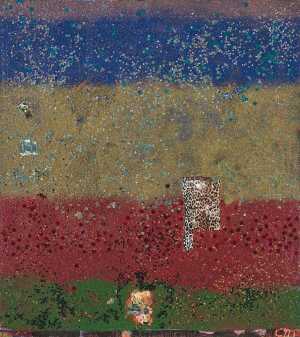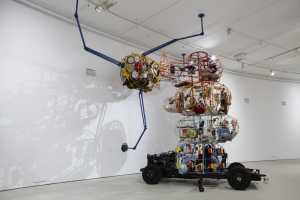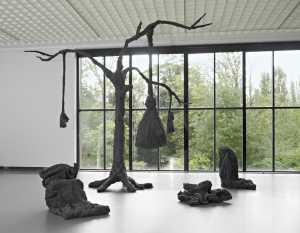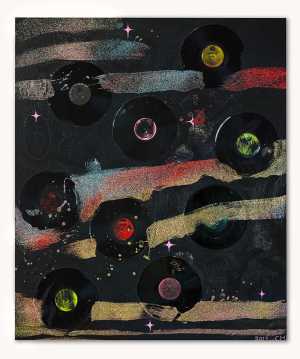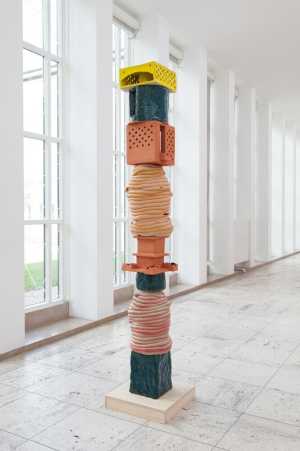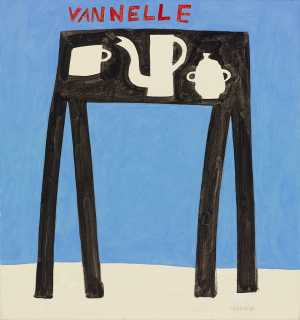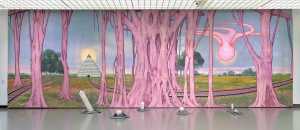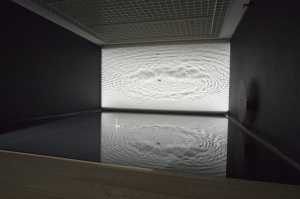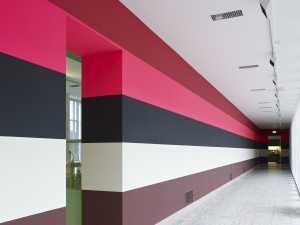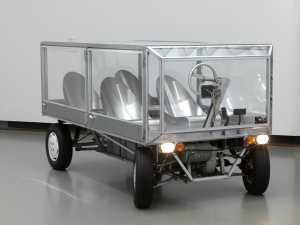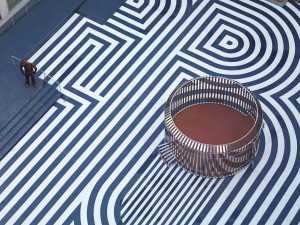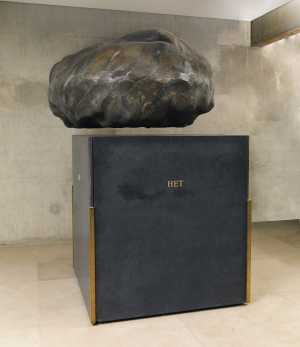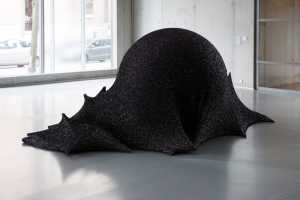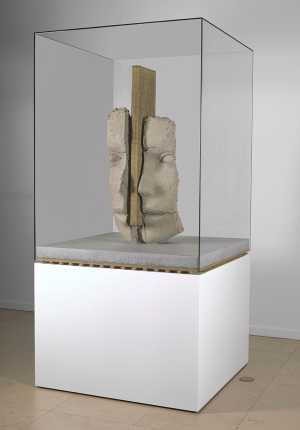How did these objects attain their mysterious forms? And what does the title mean? It's all to do with the way in which the sculpture was made. In the glass sculpture Lederhosen, the traditional Tyrolean leather shorts were used as moulds for glassblowing. Maria Roosen did not do the glassblowing herself, but left this to the glass artist Bernand Heesen. He blew the molten glass into the shorts. As the glass expanded and the leather burned away, creating a foul-smelling smoke, the glass objects assumed their strange, organic forms. In total Heesen made seven objects using this process. They clearly belong to the same 'family', but each has its own unique character. Maria Roosen has placed them in a row on a rubber conveyer belt. This manner of presentation gives them an additionally intriguing appearance. The raw lumpiness of the forms in combination with the glass's refined colour and sheen gives them an absurd quality: seven lumps of soldified energy; seven glass crotches with stumpy legs.

Specifications
| Title | Lederhosen |
|---|---|
| Material and technique | Glass and rubber |
| Object type |
Sculpture
> Three-dimensional object
> Art object
|
| Location | This object is travelling |
| Dimensions |
Height 34,5 cm Length 573 cm Width 79 cm |
|---|---|
| Artists |
Artist:
Maria Roosen
|
| Accession number | BEK 1689 a-h (MK) |
| Credits | Purchased 1996 |
| Department | Modern Art |
| Acquisition date | 1996 |
| Creation date | in 1995 |
| External exhibitions |
Maria Roosen – Schrobben, harken, gieten, vegen (2025) |
| Research |
Show research Digitising Contemporary Art |
| Material | |
| Object | |
| Geographical origin | The Netherlands > Western Europe > Europe |
All about the artist
Maria Roosen
Oisterwijk 1957
The works of Maria Roosen (1957) have a highly tactile quality: you want to touch them. The glass objects are hand blown, employing great technical skill and...
Bekijk het volledige profiel

